Fermented Garlic Honey | Recipe And Benefits
Fermented Garlic Honey is a very simple recipe to make and a great ferment to have on hand for cold and flu season. All it requires is peeling garlic cloves and pouring honey over them. Simple, however you will need some patience while the fermenting process takes place. Weeks to months depending on how mellow you’d like the garlic to be. The honey does taste great just a few days in though so sampling it early is inevitable.
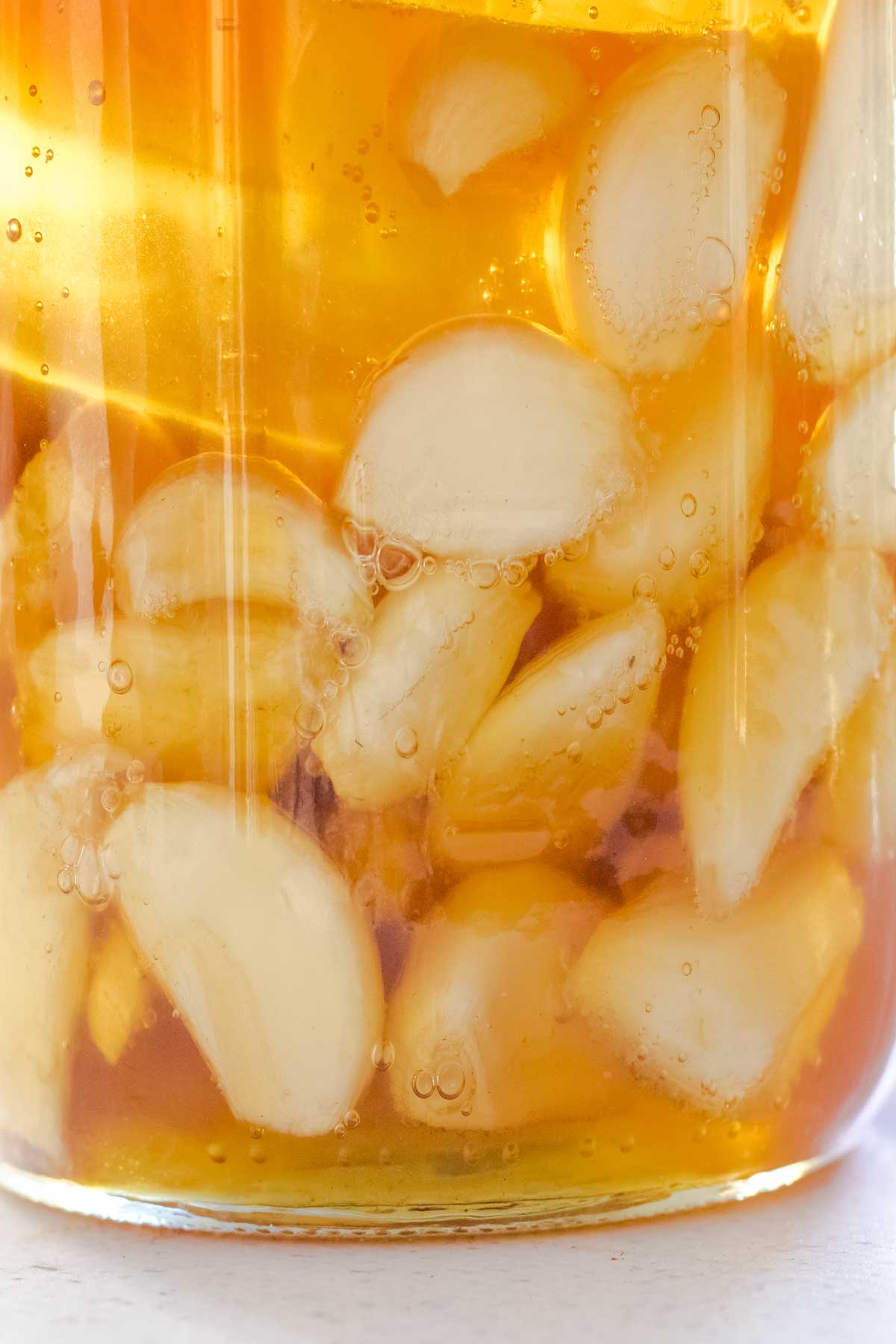
In This Article
Is It Safe To Eat Fermented Garlic In Honey?
Let’s address this one straight up. Something that causes a lot of concern with this ferment is the risk of botulism spores growing. Many blogs mention it and suggest it’s not safe to make. However, to date, there has not been one single documented case of botulism contamination relating to honey-fermented garlic.
Clostridium botulinum (CB) can be found in soil and as a result, it can be present in foods such as garlic. It can also be present in honey (and mostly harmful to infants here). That is not to say that adding the two together = botulism.
CB needs a neutral pH, a moist environment, and no oxygen to thrive. It’s important to note that food preservatives, like sugar, inhibit it. That includes honey.
Honey is roughly 80% sugar and 20% water so qualifies as a high-sugar, low-moisture food. The garlic does produce a little moisture, which slightly dilutes the mix. It’s not enough to make it troublesome though. There are also the protective effects of the fermentation process.
With this in mind – I feel it is a safe and very nourishing ferment to make – but you need to make that decision for yourself. If you are concerned, you can also keep it in the fridge to ease your mind.

Ingredients Needed For A Garlic Honey Recipe
You will only need two very simple ingredients here. Any amount of garlic you like and your favourite raw local honey. That’s it! The only other ingredient is time, because this ferment tastes better the longer it sits. The flavours slowly meld together making the garlic much more mellow.
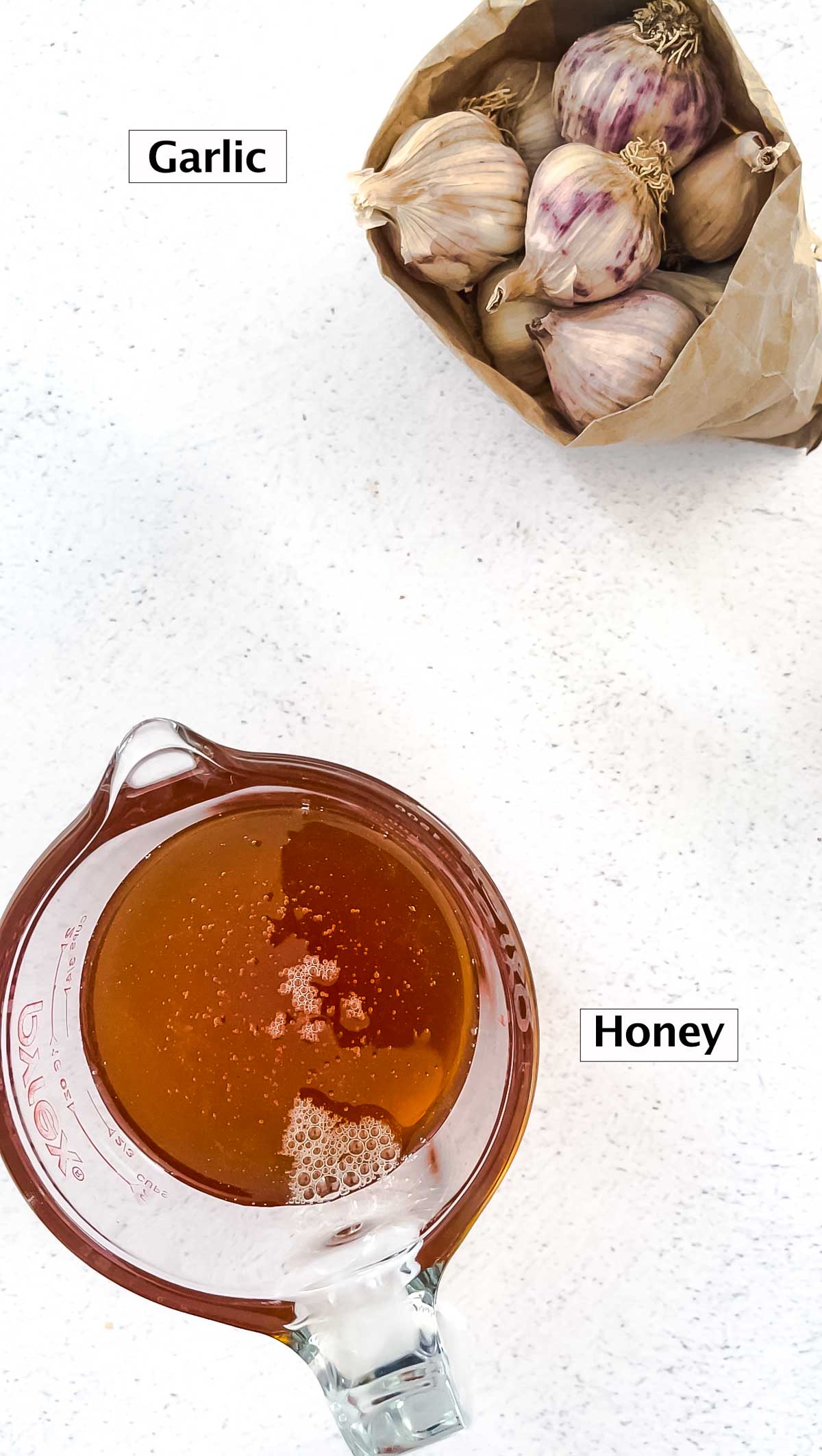
- Whole Garlic Cloves – you’ll need several heads of garlic for this ferment. The amount used is dictated by the size of the jar used. I had a large jar, 750ml / 25oz, which used roughly 12 small heads of garlic.
- Local Raw Honey – this is essential as it contains the bacteria and yeast needed for fermentation to occur. As this ferment is also used for its medicinal benefits, raw honey/unpasteurized honey is the best choice because it has the highest nutritional compounds to offer.
Once this has fermented it will be used quickly. While it might be a bit laborious to peel a tonne of garlic cloves, I do recommend it. That way you’ll have fermented garlic in honey for many months, not just a week.
How To Make Fermented Garlic Honey
This is as simple as it gets! Peel the garlic and cover it in honey. However, it is also important to make sure the cloves you’re using are not bruised or spoiled. This can and will likely affect the fermentation process. So, take the time to look over them once peeled, chop off any bits that need it or discard the whole clove if necessary.
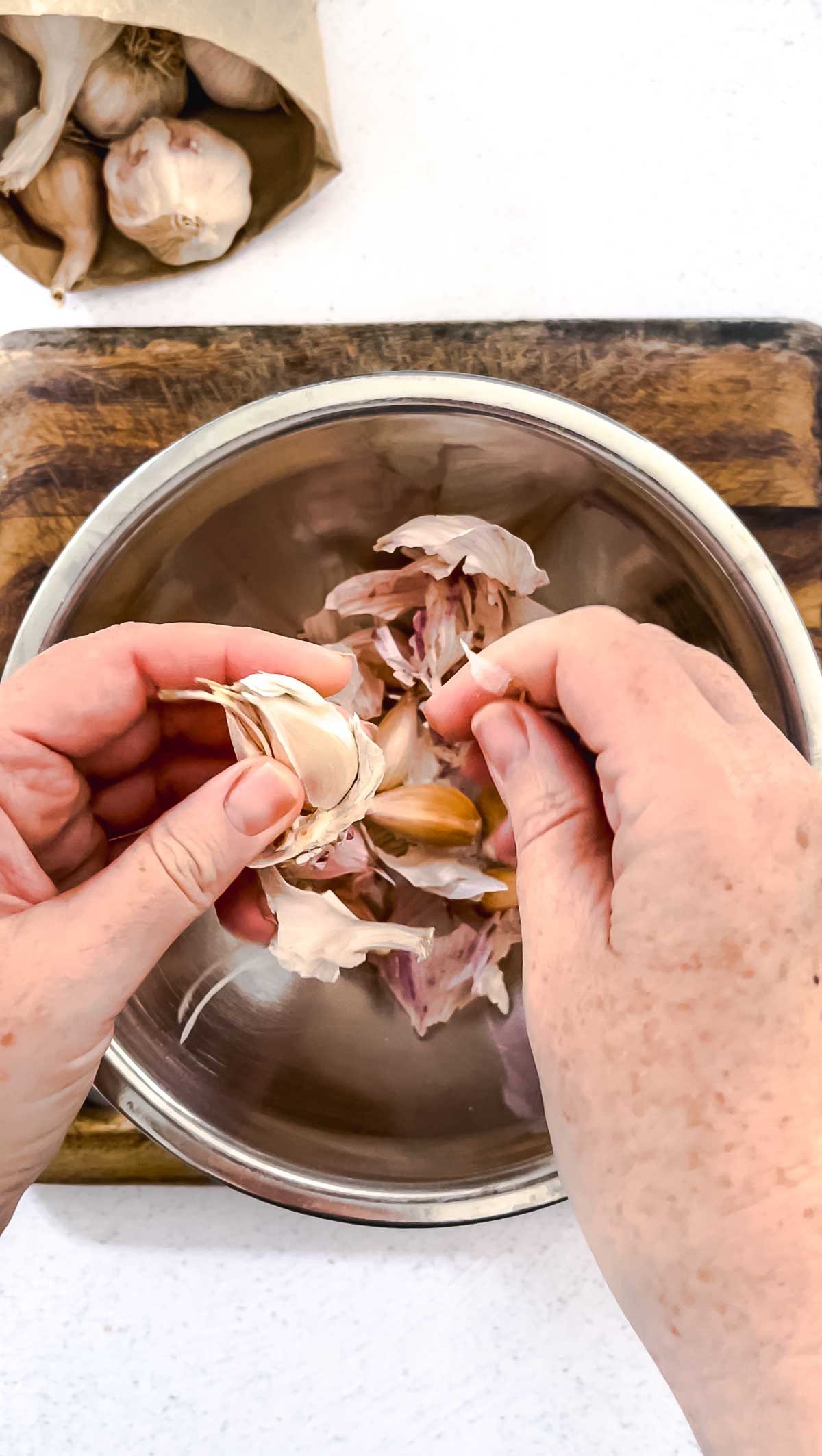
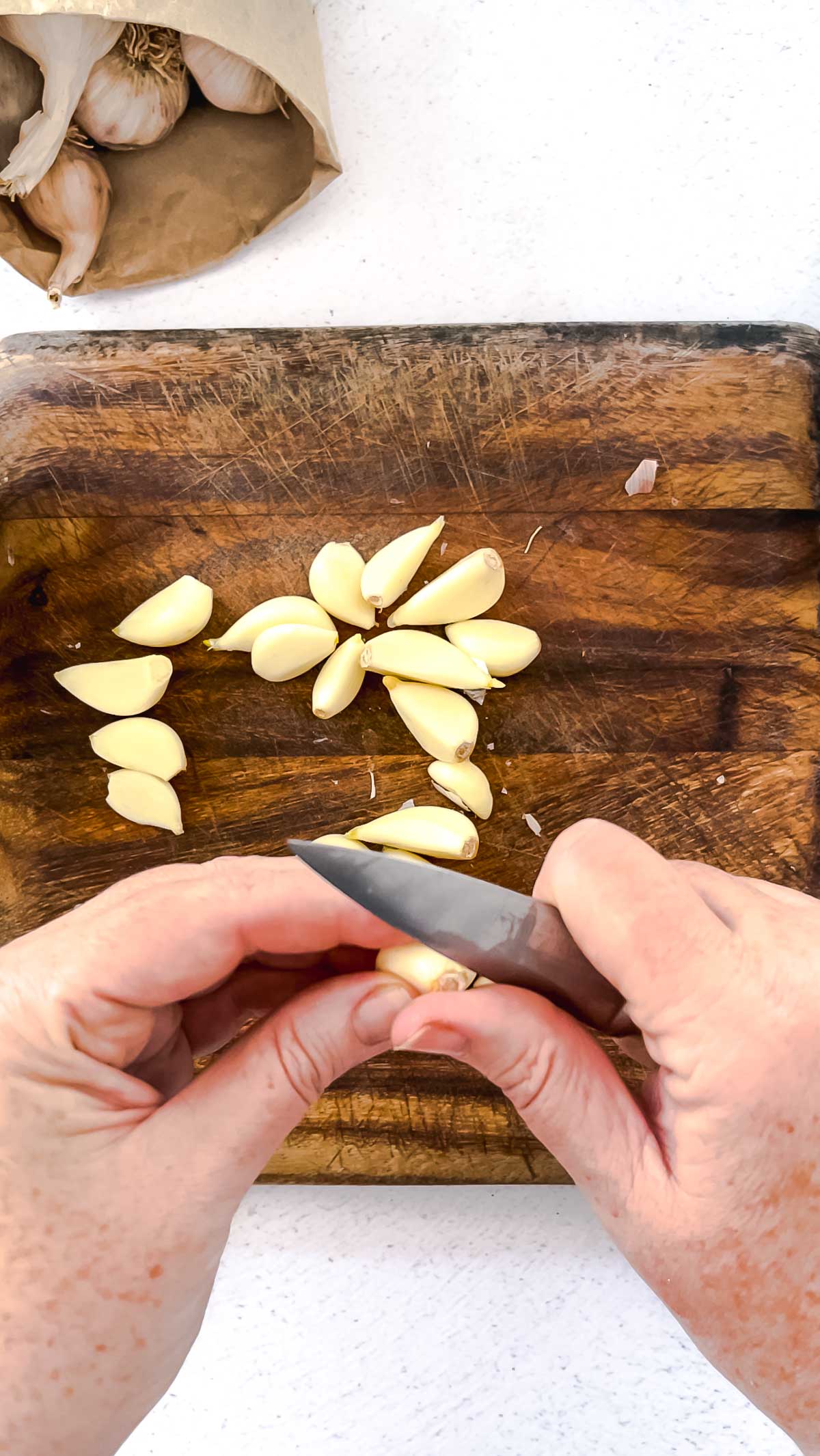
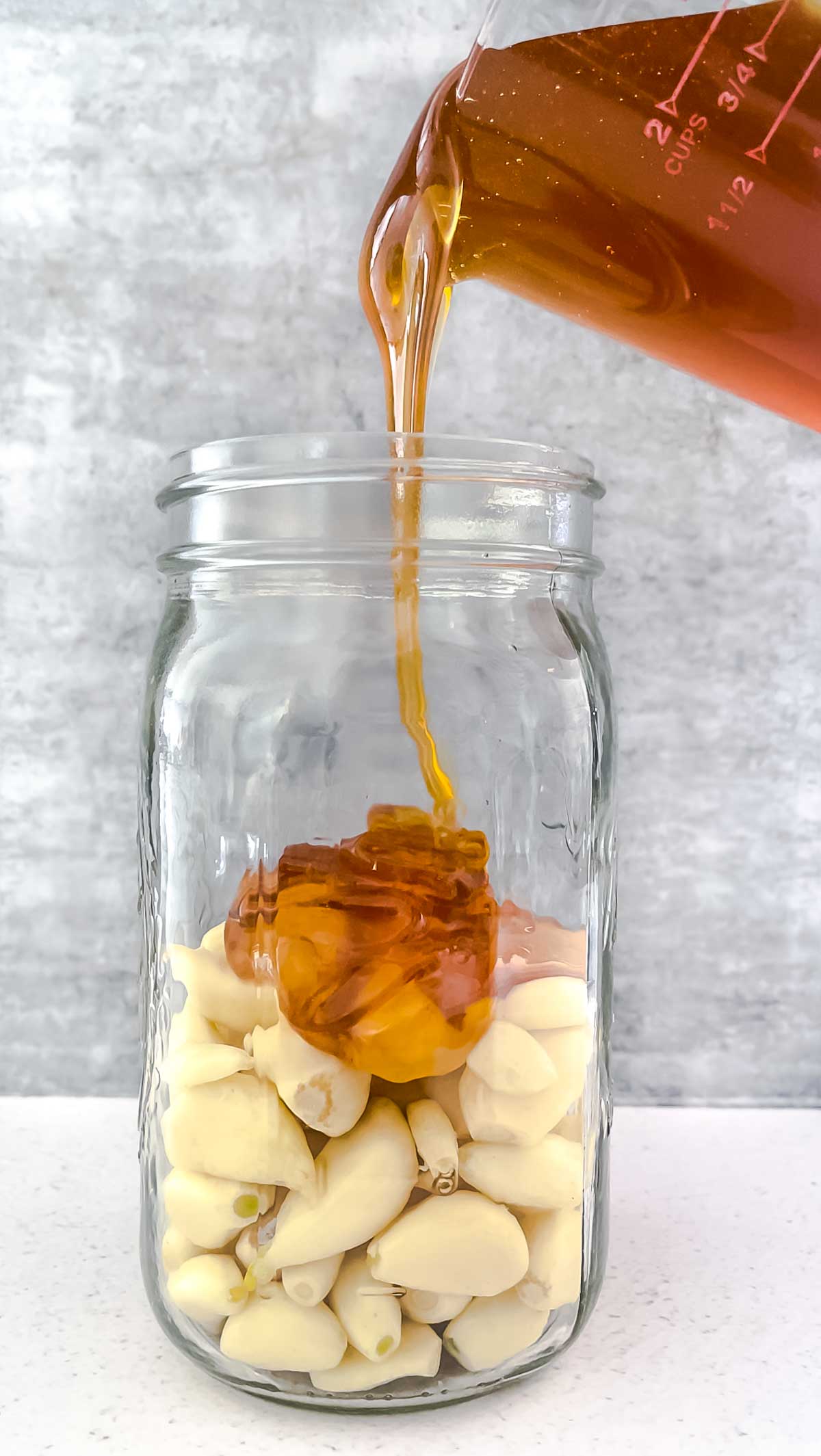
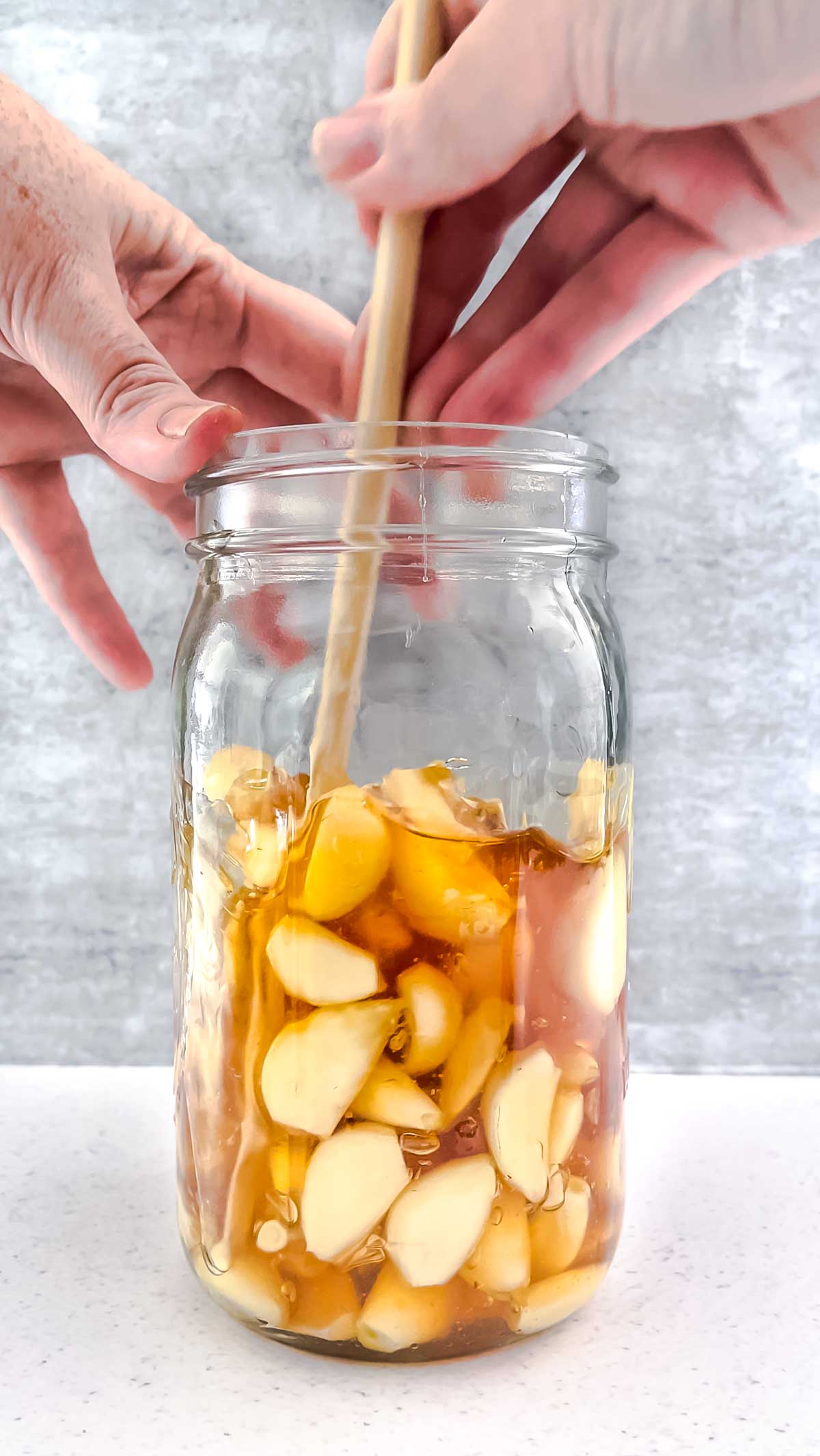
- Peel all the garlic cloves and cut the bases off that were attached to the root.
- Cut out any bruised bits or discard the whole clove in need.
- Place the peeled raw garlic cloves into your very clean glass jar and pour honey over the top leaving roughly 5cm (2 inch) headroom. A little more is OK too.
- Stir to coat all the garlic cloves. I like to use a chopstick for this. It’s the easiest way to move all the garlic around.
- Pop the lid on the jar and set it aside to ferment in cool place out of the sun for a month at room temperature. Be sure to turn the jar a few times every day to help keep the garlic submerged in the honey. Just tighten the lid before you turn it or you’ll have honey spilling out. You could also use glass weights to weigh down the garlic if you have them.
Note: Gases build up during fermentation that can lead to exploding jars! As such, for the first week of fermentation, it’s important to ‘burp’ the jar a few times a day. To do that you simply loosen the lid, then tighten it again. You may hear a pop as you do it, which is just the gas being released.
Fermented Garlic Honey Uses
You can use this ferment in any way you like once ready.
- Traditionally – take a clove and a spoonful of honey from the jar and have them as is. The garlic is much more mellow after sitting in the honey for a month. The honey will also have taken on a delicious garlic flavour.
- Add to salad dressings for a boost of probiotic goodness.
- Chop some garlic cloves and stir them into savory labneh. Serve with a drizzle of the honey.
- Add a little of each to cooked rice or any savory meal to enhance the flavour.

Variations
Adding in spices like red pepper (chili) flakes or nigella seeds is something many people like to experiment with. Just keep in mind the darker the spices used the more the honey will change colour. Nigella for example will produce a very dark honey over time. I also find this one affects the taste quite a lot, making it slightly bitter.
Chili flakes give you a nice, warmed garlic ferment, but don’t use too much or it will become the predominant flavor. Start with ½ a teaspoon in a large jar. Less in a smaller one.
Storing/Make Ahead
This is the ultimate make-ahead recipe! Get this started in the fall/autumn so it’s ready for you to include as part of your immune boosting winter toolbox. The recipe is not suitable for freezing.
Store in a cool dark place in your kitchen. On a shelf or in the pantry out of direct sunlight is perfect. It can also be stored in the fridge if preferred.
FAQ
Fermented garlic with honey is a very old, natural remedy that is brimming with good bacteria. It was used historically for its antibacterial, antiseptic, antiviral, antimicrobial, and immune-boosting properties. It’s particularly favoured in the cooler months for its immune system support, and to soothe sore throats. A great food as medicine to have in our autumn/winter toolbox. On top of that, we have the medicinal properties of garlic to consider too. You can find more about that in my Garlic Miso recipe.
Yes! And you can reap the rewards of all the beneficial properties it contains. They’re two natural ingredients we use in our cooking almost daily so there’s absolutely no issue enjoying them when fermented either.
It’s possible though unlikely due to the fermentation process. However, as always with a ferment it’s best to let your senses guide you. If the garlic or honey are growing pink, blue, green or black mould, discard the jar immediately. If it tastes or smells rancid or sour the same should be done.
A honey ferment has a long shelf life. However, for flavour purposes, this ferment is best used within 12 months. I’ve had one sitting around for two years and the garlic crystalised a little. Still fine to eat but I suggest 12 months for maximum taste.
Want More Fermenting Ideas? Take A Look At These!
If you try this recipe, I’d love to know. Leave a comment, rate it, and remember to tag @wholenaturalkitchen in your pics or reels on Instagram, Facebook or TikTok!
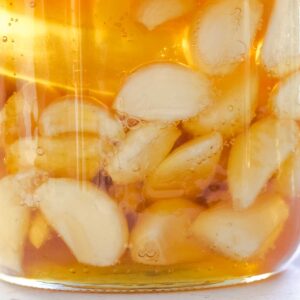
Fermented Garlic Honey
Equipment
- 25oz/750ml glass jar
- Glass weights optional
Ingredients
- 12 small heads garlic (see note 1)
- 1 pint raw honey 500ml
Instructions
- Peel all the garlic cloves and cut the bases off that were attached to the root.
- Cut out any bruised bits or discard the whole clove in need.
- Put the peeled garlic cloves into your very clean glass jar and pour the honey over the top. Stop about halfway and give the jar a stir with a clean chopstick to ensure all the cloves are coated. Top up with the remaining honey leaving roughly 5cm (2 inch) headroom. A little more is OK too.
- Be sure you turn the jar a few times every day, as this helps to keep the garlic coated in the honey. The garlic will eventually sink to the bottom of the jar and then there will be no need to keep doing this. You could also use glass weights if you have them.
How to use this fermented garlic honey
- When ready (you'll notice the honey has become much more liquid) – you can take a garlic clove and a spoonful of honey from the jar then eat it as is as a cold and flu remedy. It's great for sore throats this way! Immune-boosting at its best. You can also chop up the garlic cloves and add them to salad dressings with some of the honey or sprinkled over meals if you'd prefer that.
Video
Notes
Nutrition
Pin This Recipe For Later
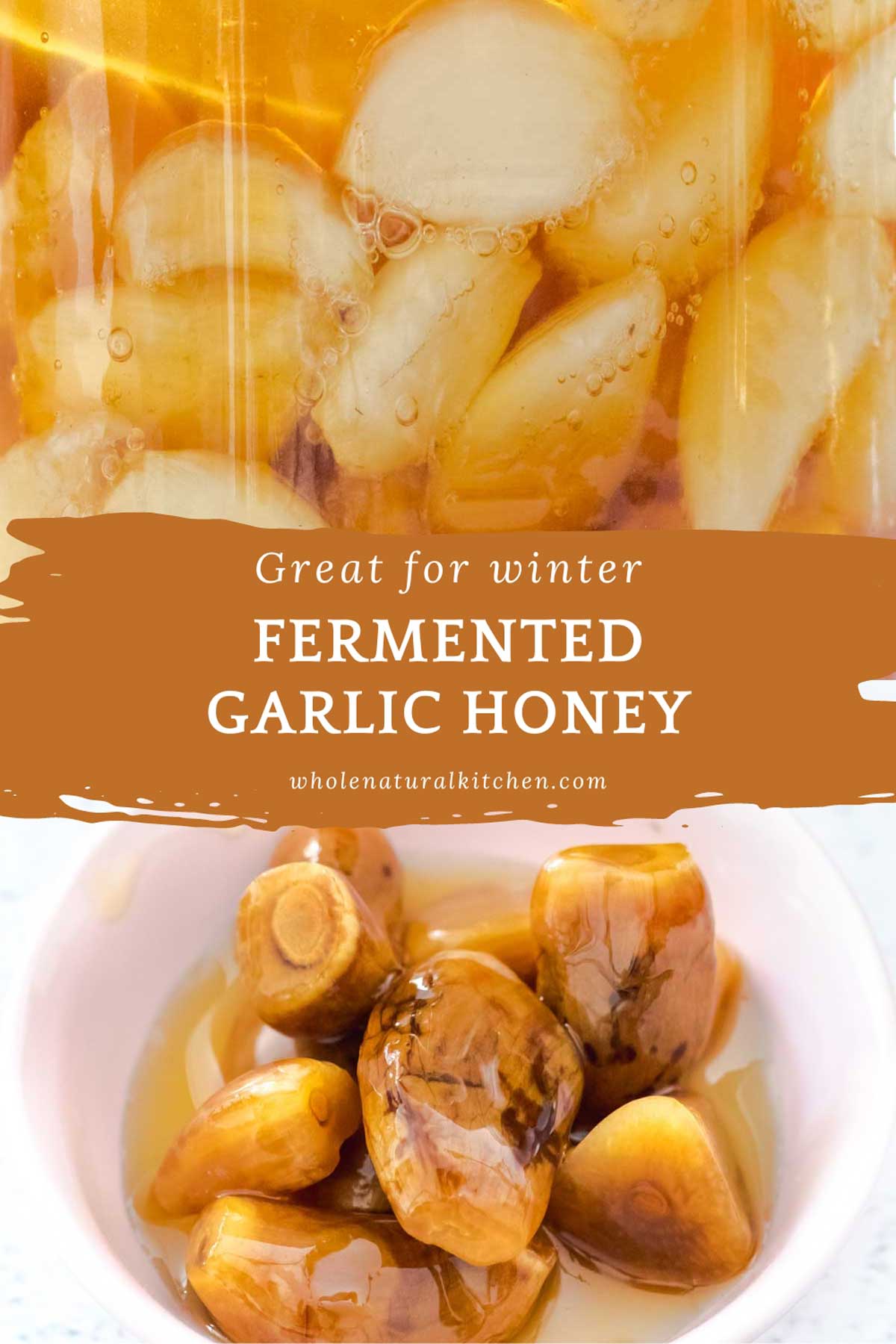

Gabby Campbell
Gabby is a degree qualified Naturopath/Nutritionist (BHSc Nat) with a love of all whole foods. She started her Naturopathic career in clinical practice before making the move to recipe development and online education – a result of wanting to combat the misinformation that abounds on the internet about food and health. Whole Natural Kitchen aims to transform the way you think about healthy eating by helping you embrace an abundance of nutritious foods while leaving the health fads behind. MORE ABOUT GABBY
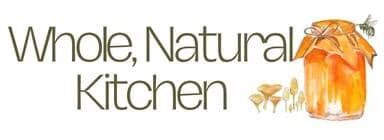
how do store
Hi Helena – you can just store this in a cool dark place in your kitchen. On a shelf or in the pantry out of direct sunlight is perfect.
I’m looking to make a batch of this as I’ve never had it. One thing I don’t see a lot about is what should be done to the empty jar to prepare it. Wash it certainly. Does it need to be dipped in boiling water to sterilize? I had considered using some of the Star San solution used in brewing to sanitize the jar, just to make sure that the only fermentation going on is the desired type. What if any prep do you do with the jar?
Hi David – I used to be quite fastidious about cleaning and sterilising jars but after years of fermenting, I now just ensure the jar is spotlessly clean and I’ve given it a good rinse with very hot water. I’ve rarely lost a batch to mould doing it this way. I would be far more diligent if fermenting things like meats but I feel this process is safe with fruit and vegetables. I will go through the process of sterilising if I’m pickling something, as that can be more prone to issues like botulism. Hope that helps!